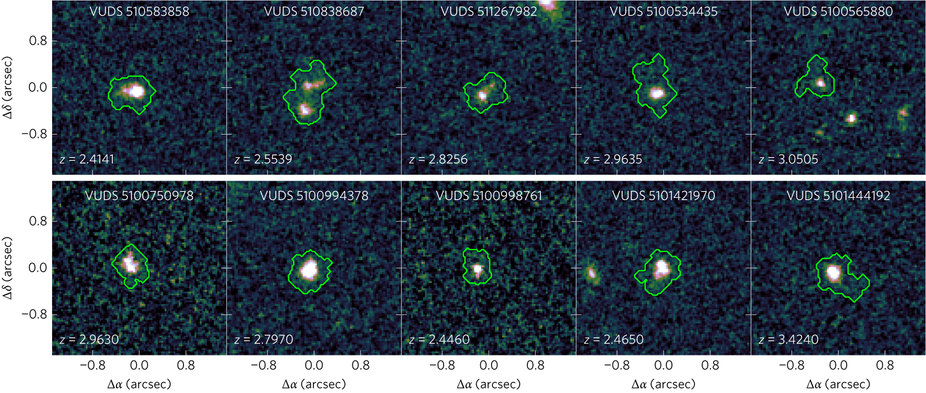Astronomers unveil with outstanding detail the first steps of nascent galaxies in the primeval universe
An international team of astronomers have pushed large telescopes to their current limits to discover a population of tiny newborn galaxies, which shed new light into the first stages of galaxy formation. Although rare, these nascent objects reveal with unprecedented detail the extreme physical conditions that have existed in the first galaxies formed right after the Big Bang.
In astrophysics, looking away is tantamount to looking back. Just as the light of the Sun takes eight minutes to reach us (and, therefore, we see the Sun when it was eight minutes younger), if we look at great distances we will be studying past ages. And in the last decades, astronomers have been able to penetrate into what are known as "dark ages," a period corresponding to the first seven hundred million years after the Big Bang and in which the first, very weak galaxies were enveloped in neutral hydrogen, a gas that increases the opacity of the medium.
Precisely that gas envelope has prevented detailed studies of these galaxies from current observatories and, as a result, the birth and early stages of galaxy growth have not been studied in detail.
To identify and study the properties of these primordial galaxies, an international team of astronomers has taken a different approach. The team presents the discovery of nascent galaxies observed at a later cosmic moment, only one billion years after the end of the dark ages, when the universe was 5% of its current age.
Being closer and in a clear environment, these galaxies are easier to study in detail. “For the first time, we can observe a population of extremely young, newly-born galaxies, presenting all the properties that are expected to be ubiquitous in normal galaxies at much earlier times”, says Ricardo Amorin (INAF / University of Cambridge), the leading researcher of the study.

The data obtained reveal that galaxies are very rich in ionized gas, "with very few amounts of dust and heavy elements, such as carbon and oxygen, that are released by massive and hot stars of short life," says Enrique Pérez Montero, researcher of the Institute of Astrophysics of Andalusia (IAA-CSIC) that participates in the work.
These stars would be responsible for ionizing the surrounding gas, and perhaps also for the end of the dark ages: massive stars end their lives in supernova explosions, which produce large gas flows that, on the one hand, "contaminated" the universe with the heavy elements formed in their nuclei and, on the other hand, pushed the neutral hydrogen and created already transparent halos.
Thus, this study, which has analyzed more than 2,000 galaxies and found ten of these primordial galaxies, has captured what appears to be one of the first massive episodes of star formation in the universe. These galaxies are about thirty times smaller and about a hundred times less massive than the Milky Way, with compact and irregular shapes that in some cases resemble tadpoles and pairs of galaxies in the process of fusion.This discovery required a great deal of observational effort, coordinated in the VIMOS Ultra-Deep Survey (VUDS), the largest spectroscopic survey of distant galaxies conducted so far at the Very Large Telescope (VLT) of the European Southern Observatory in Chile. With very sensitive spectroscopy from the VIMOS spectrograph at the VLT and images from NASA’s Hubble Space Telescope, the team could study the properties of these infant galaxies with exceptional detail.
R. Amorín et al. " Analogues of primeval galaxies two billion years after the Big Bang". Nature Astronomy, DOI: 10.1038/s41550-017-0052
Instituto de Astrofísica de Andalucía (IAA-CSIC)
Unidad de Divulgación y Comunicación
Silbia López de Lacalle - sll[arroba]iaa.es - 958230532
http://www.iaa.es
http://www-divulgacion.iaa.es

